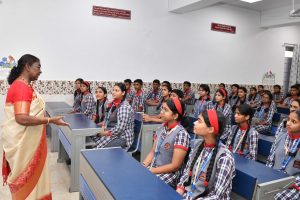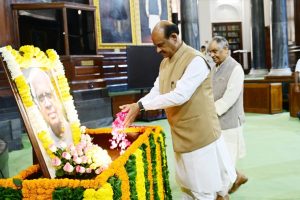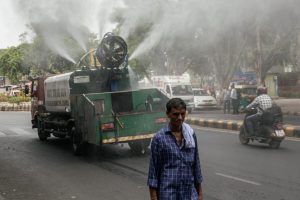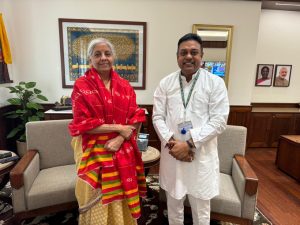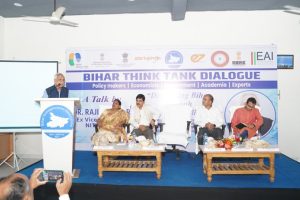Editorial analysis: Govt walks Agnipath, WTO stays in bygone era
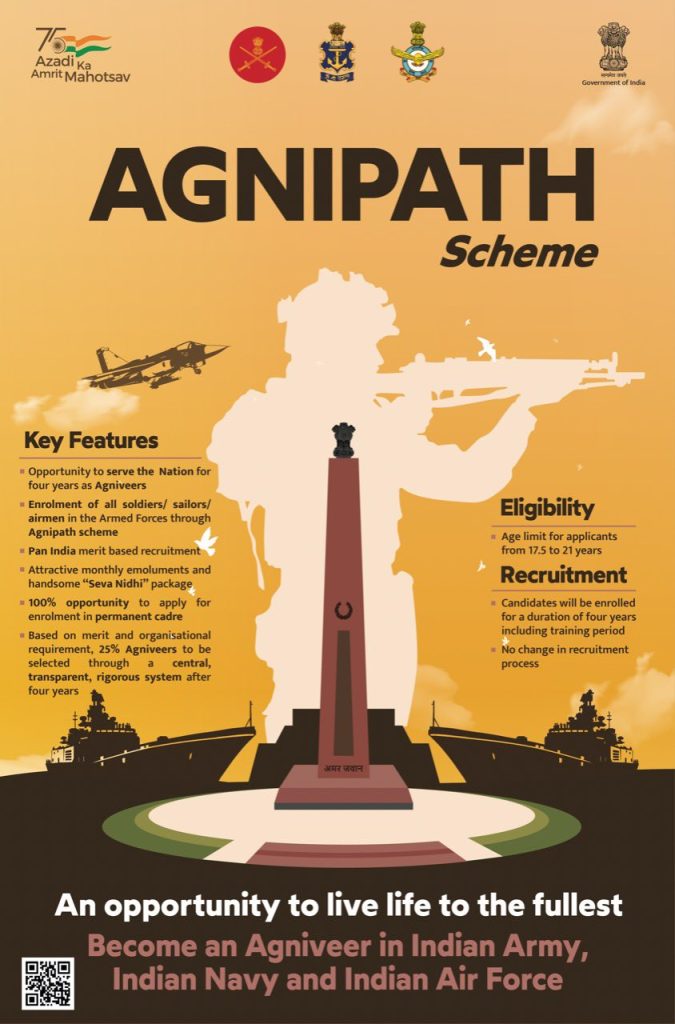
Photo Credit Twitter @rajnathsingh
The government’s unveiling of the Agnipath scheme for inducting soldiers with four-year contract in the military, the World Trade Organisation (WTO)’s remaining in the lap of the developed world, and the inflation stress for the economy are the top issues raised by the editorials of India’s five newspapers on Wednesday.
The government in a major policy shift on military recruitment decided to hire ‘Agniveer’ in the non-officer category to address over one lakh vacancies in the three wings of the armed forces.
The Indian Express (IE) in its editorial ‘Force of change’ has largely focussed in giving details of the scheme while being cautious in critically examining the initiative which seeks to hire military personnel for a short duration – four years, including six months of training, and only 25 per cent may be further absorbed for another 15-year term.
The IE editorial notes that while the government hopes to hire 46,000 Agniveer this year, the attempt is to build a younger profile of the armed forces by bringing down the average age from the current 32 years to 26 years.
The All India All Class, noted the IE, will not be restricted by ethnicity or caste as the regiments are being opened for all irrespective of their castes.
The editorial is quite liberal in letting go the government for taking its penchant for contractual employment even in the military forces, which has now been norms with all other ministries.
Everyone wants to ride the youth age and throw them when are in their 30s has been the loud lessons of the contractual employments, blatantly abused by cunning businessmen, with government agencies turning blind eyes to even basic adherence to the labour laws.
The Time of India in its editorial ‘Jawans, Josh & Jobs’ sought to probe the Agniveer scheme, raising questions on quality, strain on existing training resources, battle readiness, and employment prospects for such recruits after their four years of services.
True, some other nations have such military recruitment norms, but India has two nuclear-armed hostile neighbours that demand the country to have a robust and highly motivated Armed Forces. The people have shown commitment to fund expenses on them, and the government shouldn’t have worried about their pension and other life benefits to resort to such short-cuts in the military recruitment.
The Economic Times, The Hindu, and Deccan Herald strangely missed out on commenting on the Agniveer scheme.
The ongoing WTO ministerial conference in Geneva has been dwelt upon by the ET and ToI in its editorials. The ET has faulted the Indian government for putting forth old arguments and not re-adjusting to the demands of the climate change even while India has been part of multilateral climate agreements. The ET’s argument is, however, fallacious given that the WTO has largely been tilted to the developed world, including on the food and fishery subisidies.
India with its overdrive for clean energy has taken global leadership in response to the challenges of the climate change, including setting up of the International Solar Alliance.
The ToI in its sharp editorial on the WTO found wanting in the temporary waiver of intellectual property rights (IPRs) for covid-19 vaccines.
When humanity faced its worst crisis, the WTO was found sleeping. That the African countries are yet to have access to the Covid-19 vaccines is a slap in the face of the fair world order claimed by the WTO. It gas well been seen that the developed countries had resorted to the stock piling of the vaccines when the people were dying in the developing and the poor countries.
The Indian vaccines had come to the rescue of the humanity when the American vaccine makers were profiteering, and the WTO was in the hiding.
Deccan Herald in its editorial ‘Falling IMR is a good sign’ had lauded the sharp reduction in the infant child mortality rate from 47 in 2010 to 28 in 2020 as revealed by the sample survey of the National Family Health Survey.
The global standard for IMR is 27 deaths per 1000 live births, DH argued that India should aim to match the G20 and others with 25 or fewer infant deaths.
Deep-diving, DH called attention to the rural-urban divide in IMR, reflected in 31 and 19 infant deaths per 1000 live births, while also stressing the unevenness since Kerala’s IMR is 6 while Madhya Pradesh and Uttar Pradesh have 43 and 38 respectively.
The Hindu’s lead editorial is on inflation. Its ‘Cold comfort’ argued that the (slight) easing of retail inflation (7.79 per cent to 7.04 per cent) doesn’t give room for complacency, flagging the rural consumers who are much affected by the fuel prices while their purchasing powers are much weaker.


